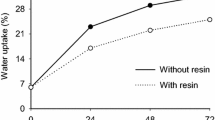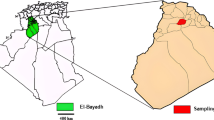Abstract
A simple, quick and nondestructive test method has been developed for determining Brassicaceae seed viability with single seed using resazurin reagent (RR) which was made by resazurin and yeast mixture. The color of the RR was changed from blue to pink or colorless when the aged seeds are soaked in the RR solution for 4 hours at 35°. Seed soaking system was developed using 96-well plate and absorbance of the RR was measured at 570 nm with a multi-plate reader. Radish (Raphanus sativus L.) seeds were artificially aged to create seven contrasting levels of viabilities. The relationships between the germination percentage of the radish seeds and the absorbance, and percentage of blue or colorless fractions of the soaked RR were appeared to have very high correlations in linear regression depending on the viability levels. The blue color fraction contained a high percentage of the normal seeds, while pink or colorless fraction contained high percentage of abnormal and dead seeds. Six lots of naturally aged Brassicaceae seeds were tested using the RR to observe an actual capability of quality assessment for intact seeds. A model equation has been developed for predicting germination percentage of the seeds by the color fractions of the soaked RR from the intact six Brassicaceae seed lots. The equation was found to have high prediction accuracy of 98.2%. This method is very quick and simple to use with a high accuracy for determining the quality of Brassicaceae seeds nondestructively.
Similar content being viewed by others
Literature Cited
Abdul-Baki, A.A. and J.D. Anderson. 1970. Viability and leaching of sugar from germinating Barley. Crop Sci. 10:31–34.
Basavarajappa, B.S., H.S. Shetty, and H.S. Prakash. 1991. Membrane deterioration and other biochemical changes associated with accelerated ageing of maize seeds. Seed Sci. Technol. 19:279–286.
Carlsen, H.N., H. Degn, and D. Lloyd. 1991. Effects of alcohols on the respiration and fermentation of aerated suspensions of baker’s yeast. J. General Microbiol. 137:2879–2883.
Corinne, F. and J. Rutzke. 2008. Influence of aging, oxygen, and moisture on ethanol production from cabbage seeds. J. Amer. Soc. Hort. Sci. 133:158–164.
Dadlani, M. and P.K. Agrawal. 1983. Factors influencing leaching of sugar and electrolytes from carrots and okra seeds. Scient. Hort. 19:39–44.
Deswell, D.P. and I.S. Sheoran. 1993. A simple method for seed leakage measurement: applicable to single seeds of any size. Seed Sci. Technol. 21:179–183.
Hailstone, M.D. and M.T. Smith. 1989. Thermally-derived volatile aldehydes in relation to seed viability in soybean seeds. Seed Sci. Technol. 17:649–658.
International Seed Testing Association. 1985. International Rules for Seed Testing. Annexes 1985. Seed Sci. Technol. 13:356–513.
Khan, A.A. 1982. The Physiology and Biochemistry of seed development and germination. Elsevier, New York.
Matthews, S. and W.T. Bradnock. 1968. Relationship between seed exudation and field emergence in pea and French beans. Hort. Research 8:89–93.
Matthews, S. and M.K. Hosseini. 2006. Mean germination time as an indicator of emergence performance in soil of seed lots of Maize (Zea mays). Seed Sci. Technol. 34:339–347.
Min, T.G. 2000. A non-destructive system for detection deteriorated crop seeds by amino acid leakage. J. Kor. Hort. Sci. 41:576–578.
Nixon, M.C. and A.B. Lamb. 1945. Resazurin triple reading test for grading the quality of raw milk. Canadian J. Com. Med. 4:18–23.
O’Brien J., I. Wilson, T. Orton, and F. Prognan. 2000. Investigation of the Alamar Blue (resazurin) fluorescent dye for the assessment of mammalian cell cytotoxicity. Eur. J. Biochem. 267:5421–5426.
Peske, S.T. and A.S. Amaral. 1994. pH of seed exudate as a rapid physiological quality test. Seed Sci. Technol. 22:641–644.
Siddique, M.A. and P.B. Goodwin. 1985. Conductivity measurements on single seeds to predict the germinability of French beans. Seed Sci. Technol. 13:643–652.
Simon, E.W. 1984. Early events in germination, p. 77–116. In: D.R. Murray (ed.). Seed Physiology vol. 2. Germination and reserve mobilization. Academic Press, New York.
Taylor, A.G., T.G. Min, and C.A. Mallaber. 1991. Seed coating system to upgrade Brassicaceae seed quality by exploiting sinapine leakage. Seed Sci. Technol. 19:423–434.
Verma, V.D. and H.H. Ram. 1987. Genetics of electrical conductivity on soybean. Seed Sci. Technol. 15:125–134.
Zhang, M., Y. Liu, I. Torii, H. Sasaki, and Y. Esashi. 1993. Evolution of volatile compounds by seeds during storage periods. Seed Sci. Technol. 21:359–373.
Zhang, M., H. Yajima, Y. Umezawa, Y. Nakagawa, and Y. Esashi. 1995. GC-MS identification of volatile compounds evolved by dry seeds in relation to storage conditions. Seed Sci. Technol. 23:59–68.
Author information
Authors and Affiliations
Corresponding author
Rights and permissions
About this article
Cite this article
Min, T.G., Kang, W.S. Simple, quick and nondestructive method for Brassicaceae seed viability measurement with single seed base using resazurin. Hortic. Environ. Biotechnol. 52, 240–245 (2011). https://doi.org/10.1007/s13580-011-0182-9
Received:
Accepted:
Published:
Issue Date:
DOI: https://doi.org/10.1007/s13580-011-0182-9




